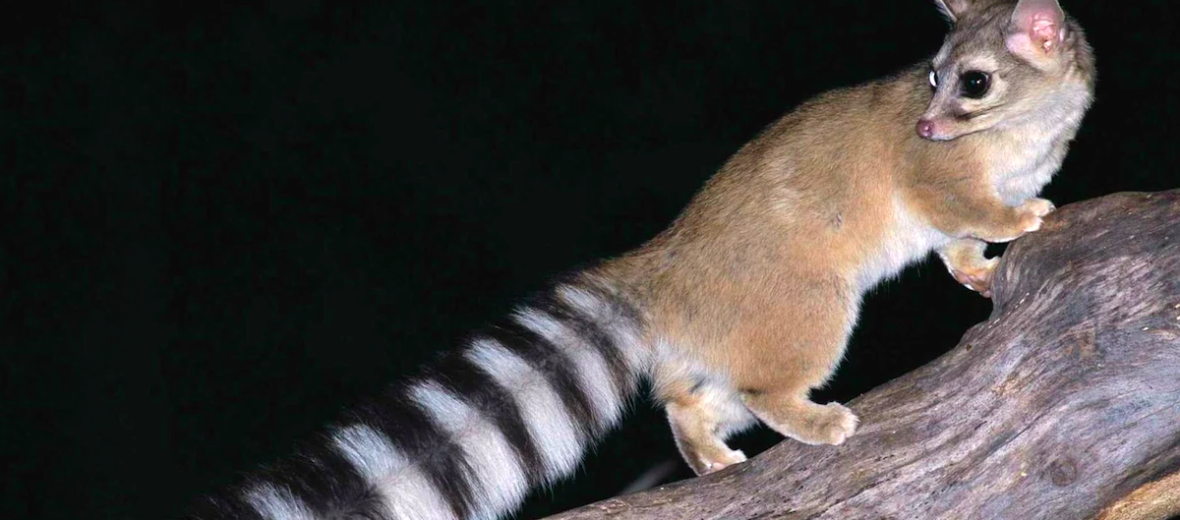
The cacomistle hails from Mexico to Central America. They prefer wet, tropical, evergreen woodlands, as well as mountain forests. Sometimes they can also be found in drier deciduous forest habitats. Even though they face the threats of habitat destruction at the hands of the logging industry, hunting, and trapping, they are still listed as Least Concern by the IUCN. Their population trend is unknown.
First the Stats…
Scientific name: Bassariscus sumichrasti
Weight: Up to 2 lbs.
Length: Up to 18.5 inches, plus up to a 20.87 inch tail
Height: Up to 6+ inches, at the shoulders
Lifespan: Up to 23 years
Now on to the Facts!
1.) Although frequently confused with ring-tailed cats, cacomistles don’t possess retractable claws. Cacomistles also have faded coloration on their tails and pointed ears.
2.) These critters are nocturnal (active at night).
3.) They patrol an area of .07 square mile.
4.) Cacomistles are solitary and only come together to mate.
5.) While typically quiet, if startled, they can let out a bark, scream, or snarl.
But wait, there’s more on the cacomistle!
6.) These creatures prey on insects, amphibians, reptiles, mice, rats, and various fruits.
7.) The only intentional interaction between males and females occurs in spring.
Did you know…?
Their common name hails from the Nahuatl language – tlahcomiztli, and translates to “half mountain lion” or “half cat.”
8.) Females undergo up to a 2 month gestation (pregnancy) that yields a single cub.
9.) Cubs are weaned at 3 months and are taught to hunt at that time.
10.) Cacomistles come from the same family as coatis and raccoons.
Now a Short Cacomistle Video!
Be sure to share & comment below! Also, check out the Critter Science YouTube channel. Videos added regularly!
Want to suggest a critter for me to write about? Let me know here.
Some source material acquired from: Wikipedia & IUCN



